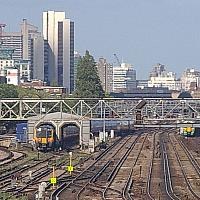(BRUSSELS) – The European Parliament approved Thursday the ‘technical pillar’ of a comprehensive railway package which aims to make rail travel in Europe more attractive.
The ‘technical pillar’ is designed to reduce the technical obstacles that differing national standards and procedures create for rail operators and rolling stock manufacturers.
The rules, which have been agreed by Parliament and Council negotiators, will cut the time and the cost of certifying that operators, locomotives and carriages meet safety and technical standards.
The changes approved on Thursday are the first part of the 4th railway reform package, which aims to boost performance and attract investment in the rail sector, encourage rail service quality improvements for passengers and boost the use of rail transport. Ultimately, it should also help to achieve EU emissions objectives for the transport sector.
Marketing authorisation procedures for rolling stock manufacturers and safety certification ones for operators should become faster and less burdensome for both, since the European Railway Agency (ERA) will be empowered to issue market authorisations and safety certifications. Currently, manufacturers and operators must apply to authorities in each country.
Authorisation and certification procedures
- For cross-border services, applications for safety certification of rail companies and authorisation of locomotives and carriages will be made to the European Railway Agency.
- For providing services and placing on the market of rolling stock within a member state, operators and manufacturers would be able to choose whether to apply either to the ERA or to the national authorities.
- One-stop-shop for applications: the ERA will set up an information and communication system, which will function as a single entry point for all applications for safety certification and market authorisation.
The ERA will also be able to play a greater role in ensuring seamless development of control and command systems, because it will be able to assess the technical solutions foreseen in any call for tenders published for the European Rail Traffic Management System (ERTMS) for the supply of track-side equipment. The agreement also provides for further harmonization of technical standards.
For more information, see the European Parliament’s background note.
Next steps
The new certification and authorisation arrangements will be operational within 3 years of the entry into force of the new rules. EU member states may extend this period by one year, if they notify the ERA and the European Commission and justify the extension.



